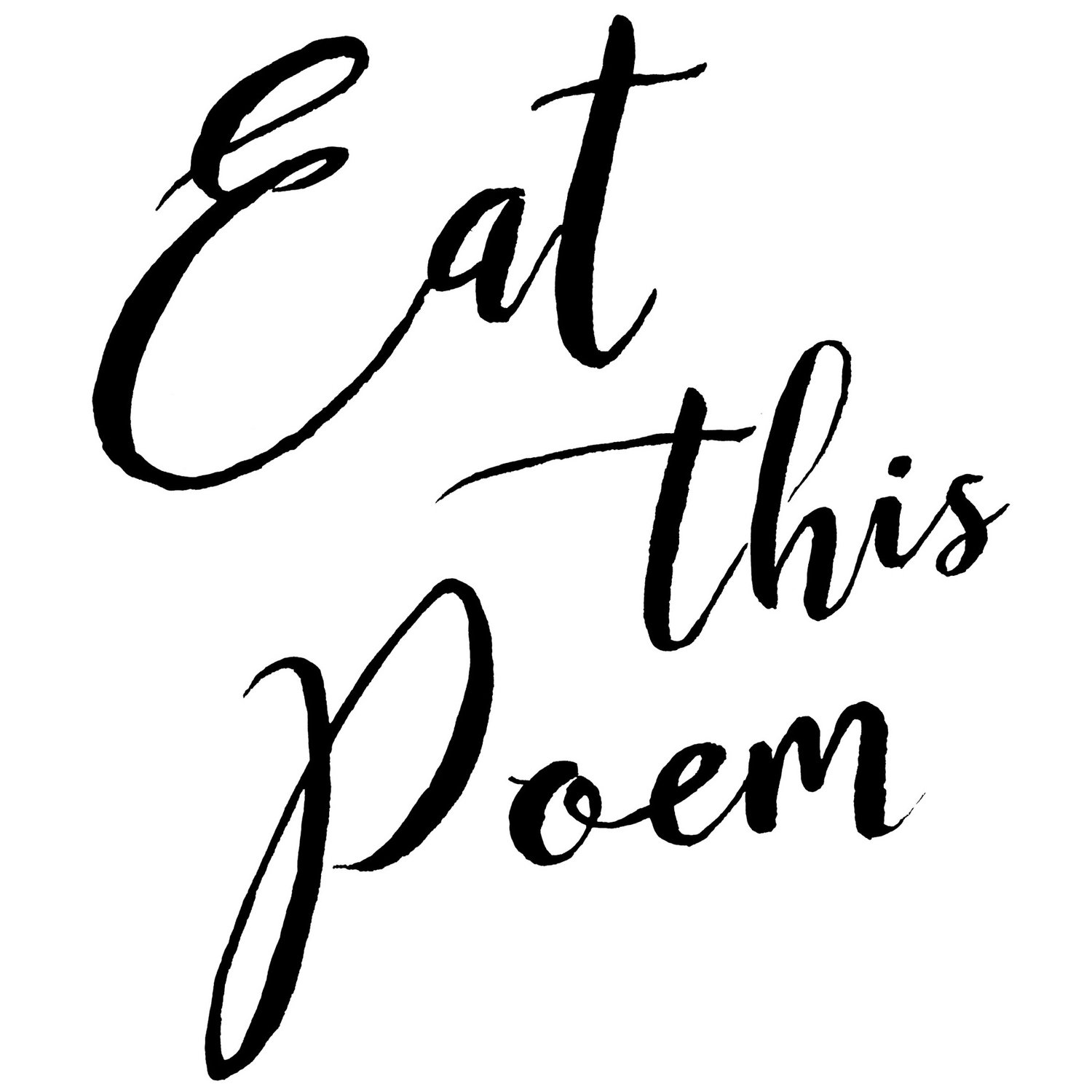In the early days of the Eat This Poem blog, I accepted poetry submissions for upcoming posts. One day, a beautiful little sonnet appeared, and I loved it so much I tucked it away. I'd just started exploring the idea of a cookbook, and knew I wanted to keep this poem to include inside. The only problem was, it took years to finalize and get to the point when I needed to reach out to publishers and poets for permissions.
"Tea" just sat in my file, marked up, underlined, waiting. When I finally emailed Jehanne to thank you for submitting it all those years ago, and the good news that it was going to be published in a book (hooray!), I was thrilled she said yes. And since today is publication day (woooo hoooo!), I thought I'd share this little poem and one of the recipe pairings from the cookbook.
On the topic, some very kind things have been said about Eat This Poem, so I've basically been sobbing happy tears for the past week, and might continue well into April. Being at this point in my writing journey is such a special experience, and I'm trying to soak it up while it lasts!
Here's where you can find some extra recipes and peeks inside Eat This Poem. You can also read more on the book's press page.
Radicchio Panzanella | Considering the Radish
The Earthy Beauty of Mushrooms | Food Republic
Interview with Jessie Voights | i8tonite
The Pleasures of Eating Mindfully | UpBeat Living
Podcast | Chasing Creative
Podcast | Wild Elixir
TEA
By Jehanne Dubrow
Tonight I’m fruit and clove. I’m bergamot.
I drop a teabag in the cup and boil
the kettle until it sings. As if on cue,
a part of me remembers how to brew
the darker things—those years I was a pot
of smoky leaves scented with orange oil.
Truth is: I don’t remember much of school,
the crushed-up taste of it. I was a drink
forgotten on the table, left to cool.
I was a rusted tin marked childhood.
I don’t remember wanting to be good
or bad, but only that I used to sink
in water and wait for something to unfurl,
the scent of summer in the jasmine pearl.
Within this brief sonnet, “darker things” from years past go unnamed, and a new language is formed. For fourteen lines, the speaker personifies tea, embodying familiar flavors of bergamot, fruit, and clove while becoming an invisible cup “forgotten on the table” and recalling the “crushed-up taste” of school. It’s easy to put yourself in her place, walking the halls with friends, pulling notebooks out of a locker, sitting in bleachers during football games, trying with desperation to grow into the person you are meant to become.
It takes courage to access nearly forgotten experiences, those that simultaneously shaped and shamed us. Although we might outgrow who we once were, faded memories tend to follow us into adulthood, and sometimes we need a cup of tea to make it right, a moment to settle our hearts and allow both the sweet and bitter leaves of our past to steep together.
Almond Poppy Seed Scones
Nibbling on scones fresh from the oven while sipping a cup of tea is a habit I picked up when living in London. But food is only one gratifying aspect of this ritual. What I love most is the state of mind tea places you in. For a few moments in the late afternoon, bodies pause and the mind slows down, focused wholeheartedly on the task at hand: inhaling, drinking, and taking that first, hot sip.
Makes 8
¾ cup buttermilk
2 teaspoons almond extract
6 tablespoons cold unsalted butter
1 ½ cup all purpose flour, plus more for dusting
½ cup almond meal
½ cup toasted almonds, chopped
¼ cup granulated sugar
2 tablespoons poppy seeds
1 tablespoon baking powder
½ teaspoon salt
Glaze
½ cup powdered sugar, sifted
1 teaspoon almond extract
3 to 4 teaspoons heavy cream
Preheat the oven to 400°F and set out a baking sheet lined with parchment. Stir buttermilk and extract in a glass measuring cup and put it in the refrigerator until ready to use. Dice butter into small pieces and place in a small bowl; chill for at least 15 minutes. This helps keep the butter from melting as you work.
Whisk dry ingredients together in a large bowl, then scatter the butter on top. Blend using a pastry cutter or two knives, until small pieces form and it resembles coarse meal; this can take about 5 minutes. The butter doesn’t have to be the same size (some pieces will be larger than others), but it should be evenly distributed throughout the flour. Pour the wet ingredients over the top and stir until the dough just comes together and big, crumbly clumps form.
Gather the dough together with your hands and transfer it to a lightly floured cutting board; pat into an 8-inch circle. Cut 8 wedges and transfer to the baking sheet. Bake 16 to 18 minutes, or until golden.
To make the glaze, whisk sugar with the almond extract and cream until thick but still able to drip from the back of a spoon. When the scones have cooled slightly, drizzle the glaze on top.
From Eat This Poem: A Literary Feast of Recipes Inspired by Poetry by Nicole Gulotta, © 2017 by Nicole Gulotta. Reprinted by arrangement with Roost Books, an imprint of Shambhala Publications, Inc. Boulder, CO. www.roostbooks.com










